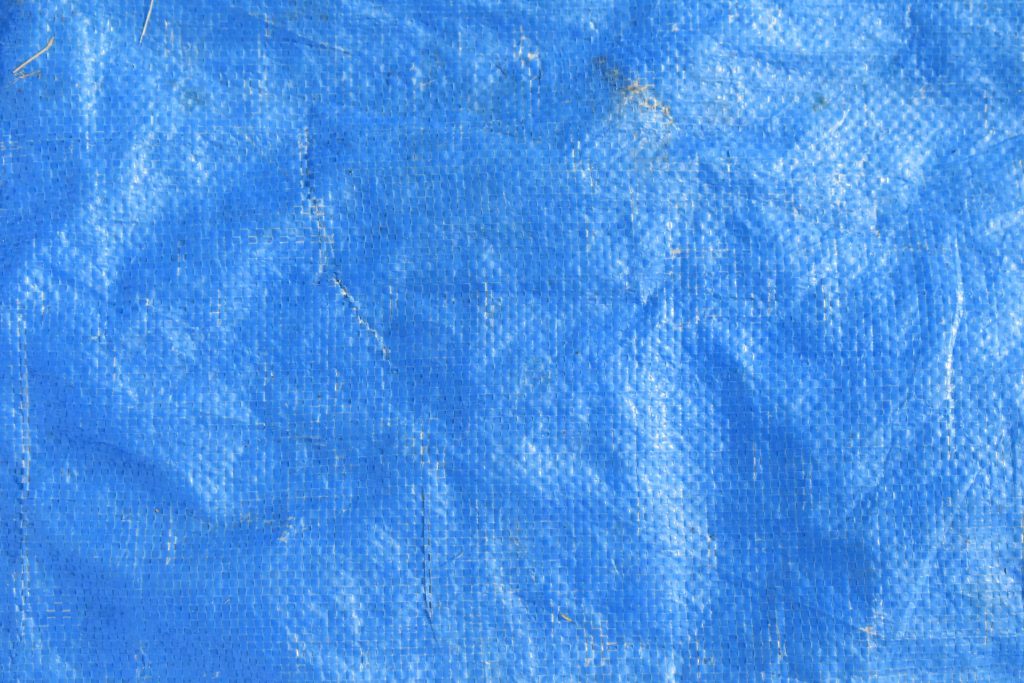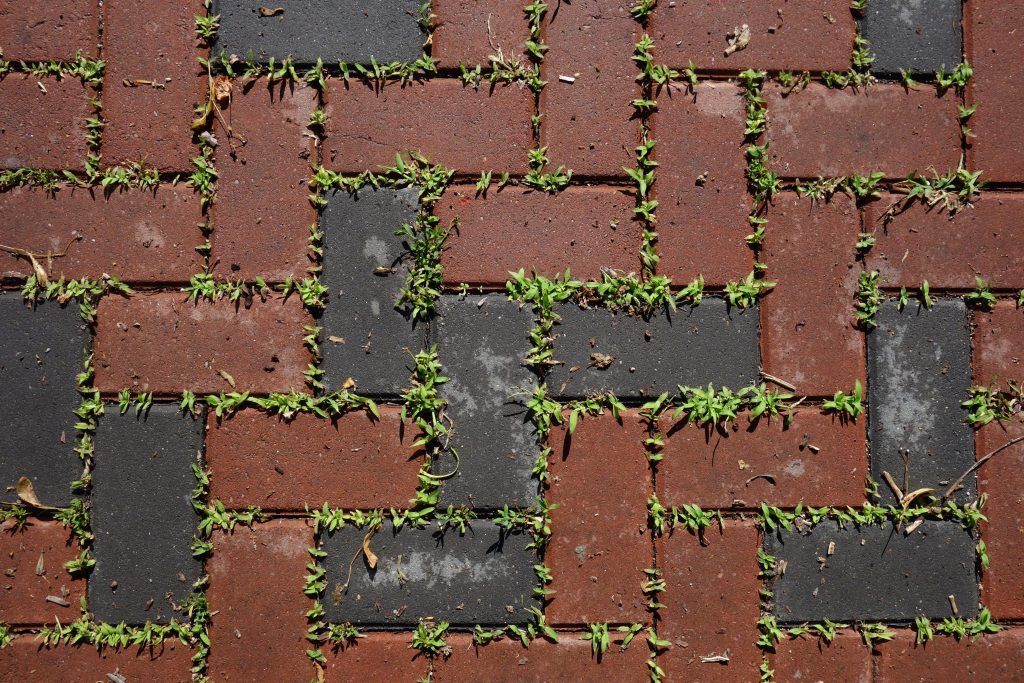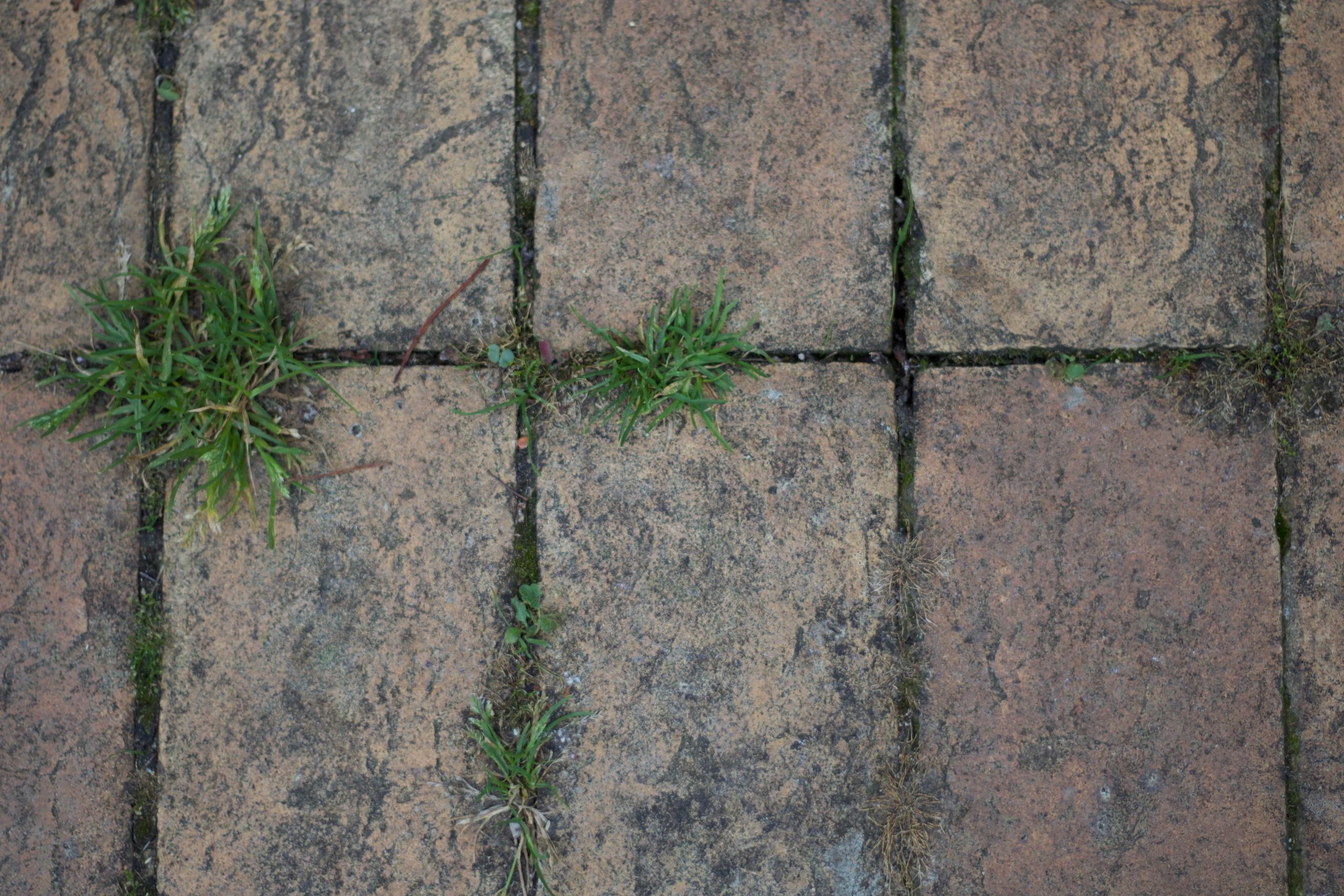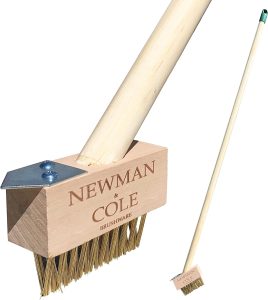Do you have unwanted grasses and/or weeds growing between your pavers?
In this guide, we’ve explained how to kill grass that’s growing in between your pavers.
We’ve also explained how to prevent grass from growing in these gaps, to stop it coming back.
How to kill grass between pavers

Below, we’ve explained three ways to kill grass that’s growing in between your pavers or bricks, such as on your patio or driveway.
1. Use boiling water
Just like weeds, you can kill grass in between your pavers using boiling water.
To do this, boil a kettle, take it outside, and get to work. Don’t be afraid to use lots of boiling water, as it’s unlikely to damage your pavers or bricks.
If the grass is quite tall, consider mowing it prior to pouring the boiling water. This opens up the plant, allowing space for the hot water to enter it.
Be careful not to spill any boiling water on yourself, however, to avoid burning your skin.
Depending on the quantity of grass, you might like to apply a second lot of boiling water the next day. After this, wait a few more days for the grass to die, and then try to remove it from in between your pavers.
2. Smother the grass

Like the grass you’ll find on your lawn, grass that’s growing in between paving stones needs air, sunlight and moisture to survive.
Therefore, you can smother grass with a tarpaulin in order to kill it.
Simply cover the pavers and the grass with a tarpaulin, and secure it in place using rocks, or U-pins, depending on where the edge of the tarpaulin ends up.
The issue with this method is although it’s very easy, it might take 2-3 weeks for the grass to completely die. Meaning, your patio will be out of action for a while, unless you don’t mind walking around on tarpaulin.
3. Use weed killer
We generally recommend to avoid using weed killer on this blog, because it can damage your lawn, and can also run off into nearby waterways, affecting the local ecosystem. It can also kill important microorganisms in the soil.
However, on pavers, using weed killer isn’t necessarily a bad idea.
Many weed killers advertise that they won’t kill grass, however, the majority actually do. To make sure your herbicide will kill grass, as well as weeds, try to look for a product that contains glyphosate. This herbicide is especially potent, and works well at killing grass.
Once you have your weed killer, apply it at the base of the grass plant, if possible. Try not to use more weed killer than is necessary, and avoid spraying herbicide when it’s about to rain, otherwise it will wash away.
Then, wait for the grass to die, as per the instructions on the weed killer you’ve bought.
How to prevent grass growing between pavers

Once you’ve killed or removed the grass growing between your paving stones, it’s worth taking steps to prevent it from coming back.
1. Clean the pavers
The first thing you want to do is clean the pavers, to prepare for filling in the gaps.
To do this, first give the pavers a pressure wash, to remove as much dirt as possible. Try to clean the gaps in between the pavers as well.
Then, clean out the gaps in between the paving stones by hand, to remove any dead grass, dirt, or any other debris that remains. You can use a brush or a knife to achieve this, or one of the two tools below.
2. Seal the gaps
Now that the pavers and the gaps between them are all clean, you can seal these gaps to prevent grass or weeds from growing through.
The best material to do this with is polymeric sand, because it will prevent anything from growing through, and it will last a long time. It also has the added benefit of being available in many different colours, to match the look of your patio.
In brief, you need to sweep the sand into the gaps, and if possible, go over them with a vibratory compactor machine, to settle the sand in place. Then, use a leaf blower to remove any excess sand from the surface, and water the pavers to activate the polymeric sand, sealing the gaps in your pavers.
Conclusion
This is the end of our guide on removing grass between your pavers, and preventing it from growing back.
If in doubt, we recommend using the boiling water method. It’s cheap, easy, quick, and generally very effective. However, it will take a while to pour boiling water on all of your weeds if you have a large patio.
Still unsure how best to remove grass from between your pavers? Feel free to leave a comment below, and we’ll respond as soon as possible.

I’m Josh, and I’m the head writer at Lawn Care Pro.
I love everything lawns, but I’m a bit of a lawn mower nerd. I spend a lot of my free time tinkering with mowers, and planning my mowing schedule for the next few weeks.
I’m also into cars, which comes in very helpful when servicing a mower engine!







